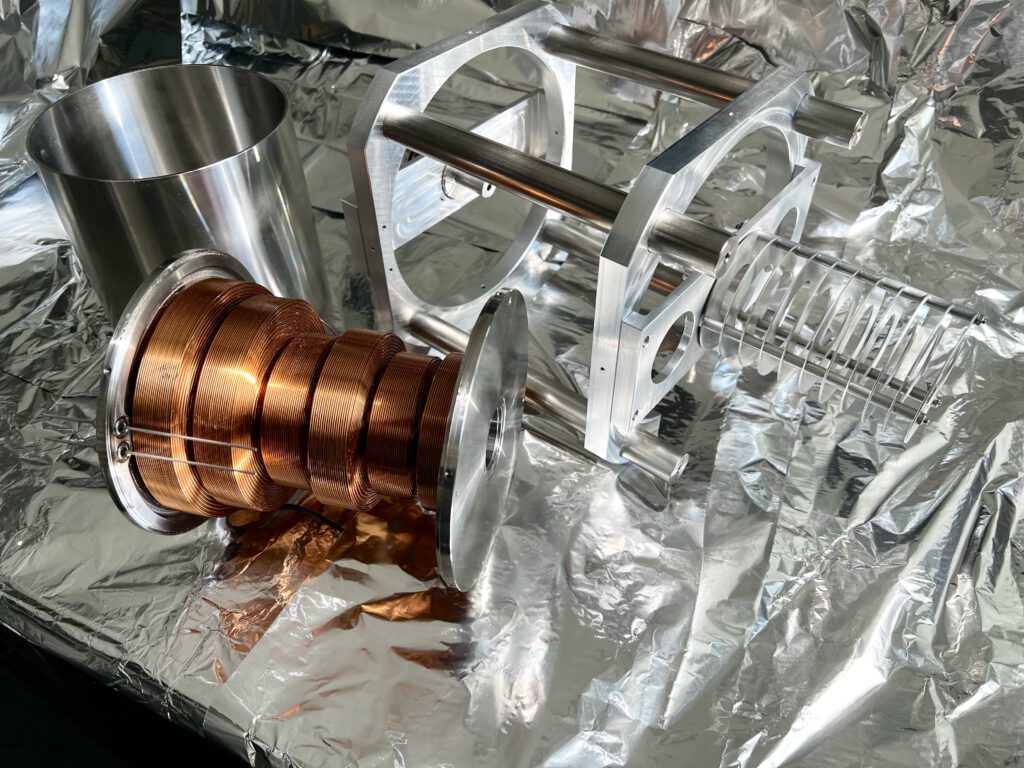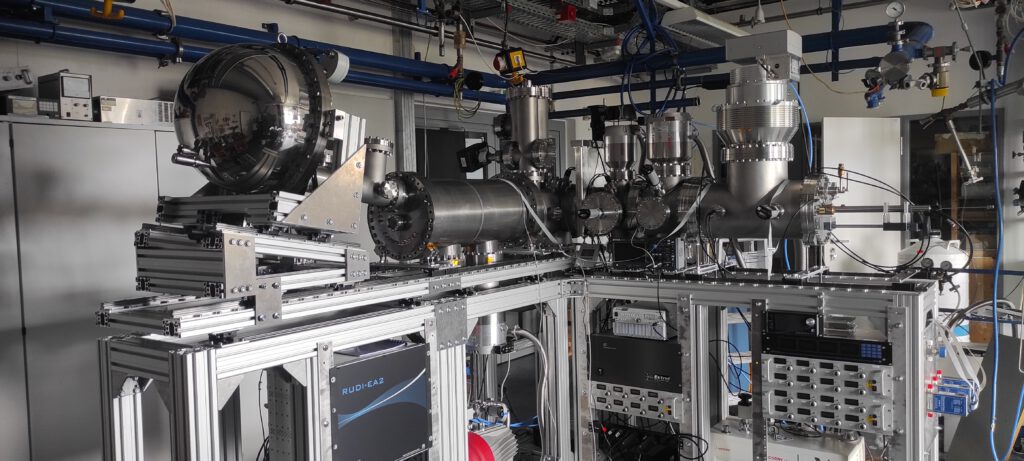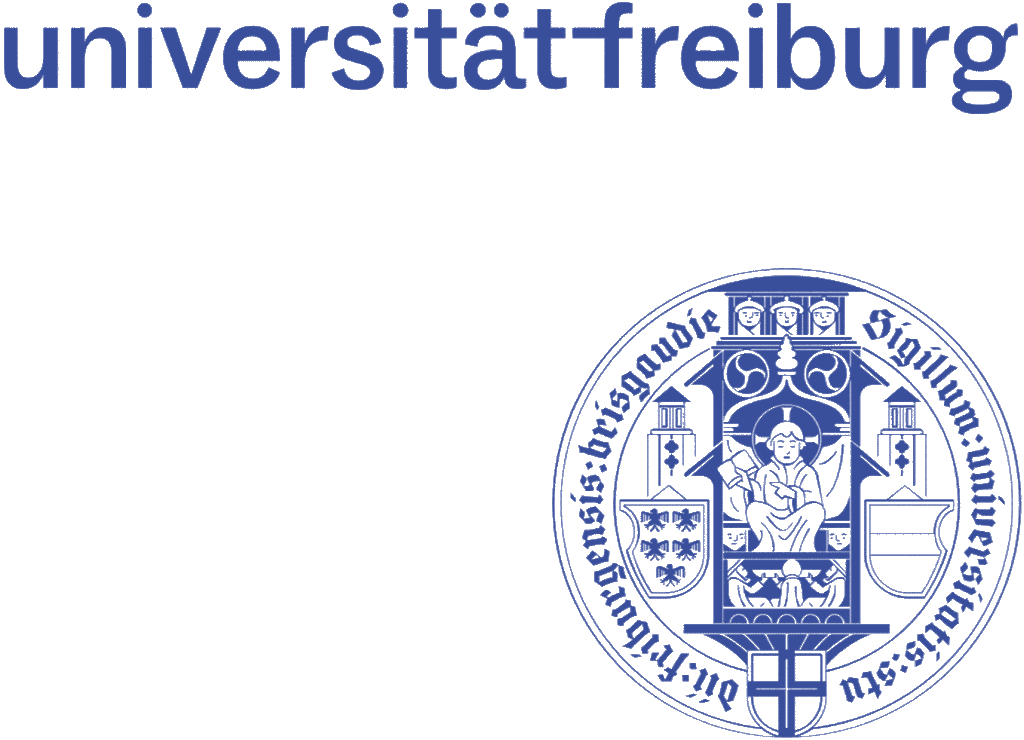
University of Freiburg
Institute of Physics
Experimental Cluster Physics
lotar.kurti(at)physik.uni-freiburg.de
Novel Apparatus for Synchrotron X-ray Photoelectron Spectroscopy of Size-Selected Gas-Phase Clusters
Characterizing the bonding behaviour in size-selected clusters using core-level electron spectroscopy is highly of special interest because the core-level electronic structure is often simpler than that of valence electrons. While valence electron structures are highly sensitive to the overall cluster structure, they can be challenging to interpret due to their complexity. In contrast, the core-level electrons are more straightforward to analyse because they are strongly bound to the nucleus, and their binding energies are well-defined. These energies shift only slightly depending on the chemical environment, which makes core-level electron spectroscopy particularly useful. The small shifts in the core-level electrons, which can be compared with theoretical calculations, provide valuable insights into the environment surrounding individual atoms. This shift is key to understanding the influence of the chemical environment on the atoms, and that’s why we aim to measure these shifts for size-selected clusters in the gas phase.
The study of material properties at the nanoscale is a highly attractive field due to its potential applications, particularly in semiconductor technology. Furthermore, it provides fundamental insights into the interplay between electronic and geometric structures, which is crucial for advancing theoretical models in material science. Small clusters are especially interesting because their electronic and structural properties significantly differ from those of bulk materials, offering unique insights into material behavior. Size-selected clusters are studied to explore for example ionization energies, fragmentation pathways, reactivity with gaseous molecules, and interactions with surfaces or supports. However, experimentally determining the most stable structures of small metal or semiconductor particles is challenging due to their tiny size, despite significant progress in the field. As a result, the collaboration between experiments and simulations is essential to correlate observables with structural properties. Methods such as electron diffraction, ion mobility mass spectrometry, photodissociation spectroscopy, valence band photoionization, and ultraviolet photoelectron spectroscopy are commonly employed to explore these properties. More recently, core-level spectra have been used to directly probe the local electronic structures of these size-selected clusters in the gas phase, providing additional information for determining their geometric structures. [1]
This approach of using core-level electron spectroscopy to characterize the bonding behavior in size-selected clusters is groundbreaking. While a small number of such measurements has been performed already using x-ray pulses from free electron lasers, we aim to be the first to perform this analysis using X-ray synchrotron radiation. For this, we are constructing a new experimental apparatus. In our setup, the interaction region between the cluster cloud and the X-ray beam from the synchrotron is inside a ion trap. Clusters are produced via a sputter source and guided through a quadrupole mass selector (QMS). After mass selection, they pass through focus optics and a deflector. The selected clusters can be directed into a reflectron to verify their mass or steered along the synchrotron beam axis into a linear RF trap. In the trap, clusters are stored and irradiated with X-rays, leading to photoelectron emission. These electrons follow parallel trajectories under the magnetic bottle principle and are guided along the beam axis. They are then deflected upward by 10°, pass through a decaying magnetic field, and are focused via electric optics into the entrance slit of a HAS.


[1] Phys. Chem. Chem. Phys., 2019,21, 6651-6661
Supervisor: Bernd von Issendorff



